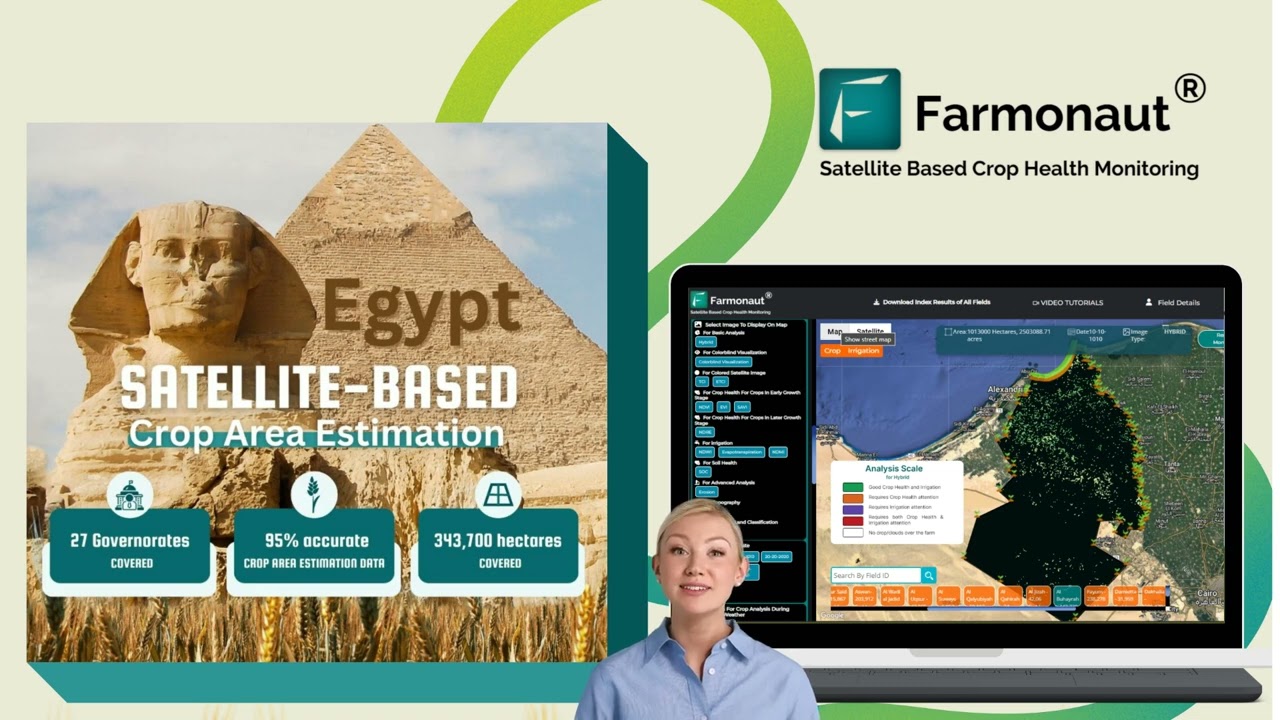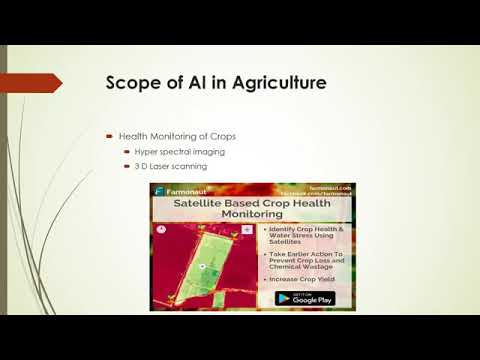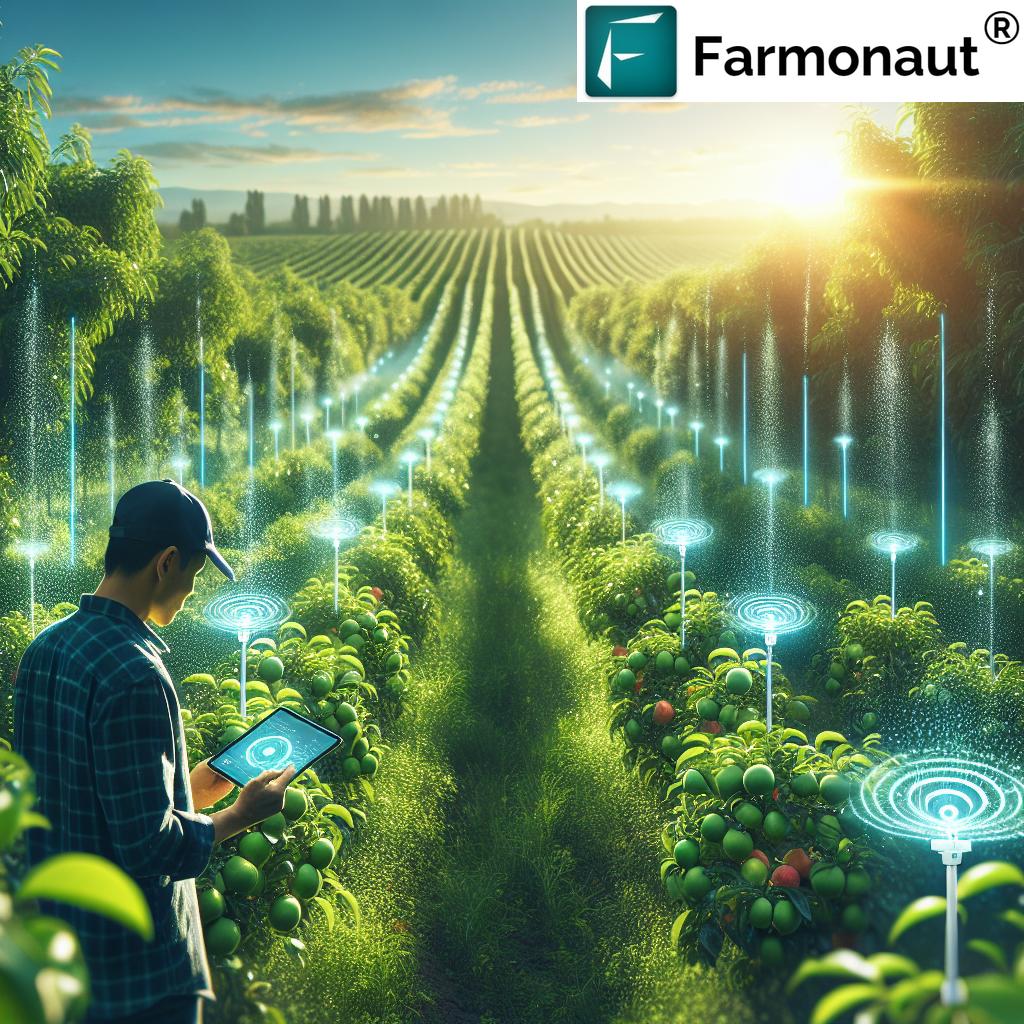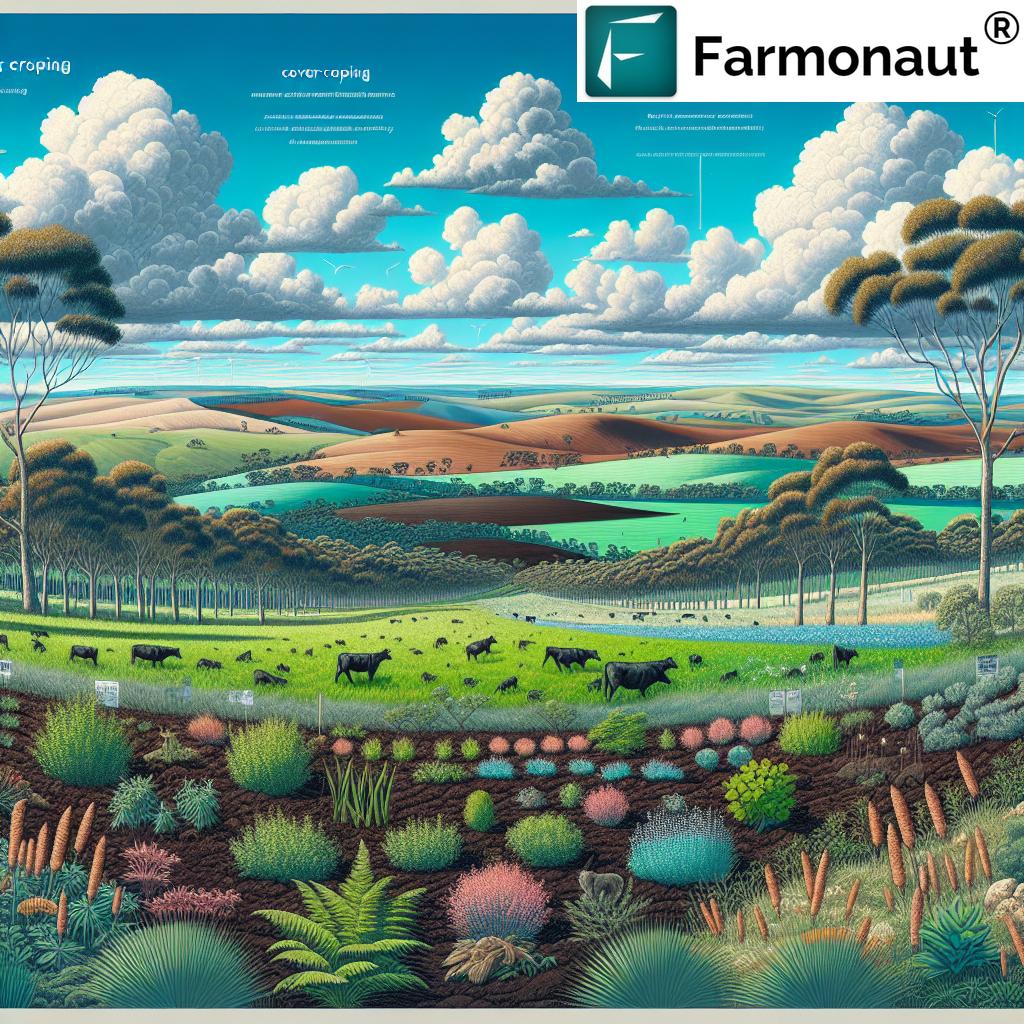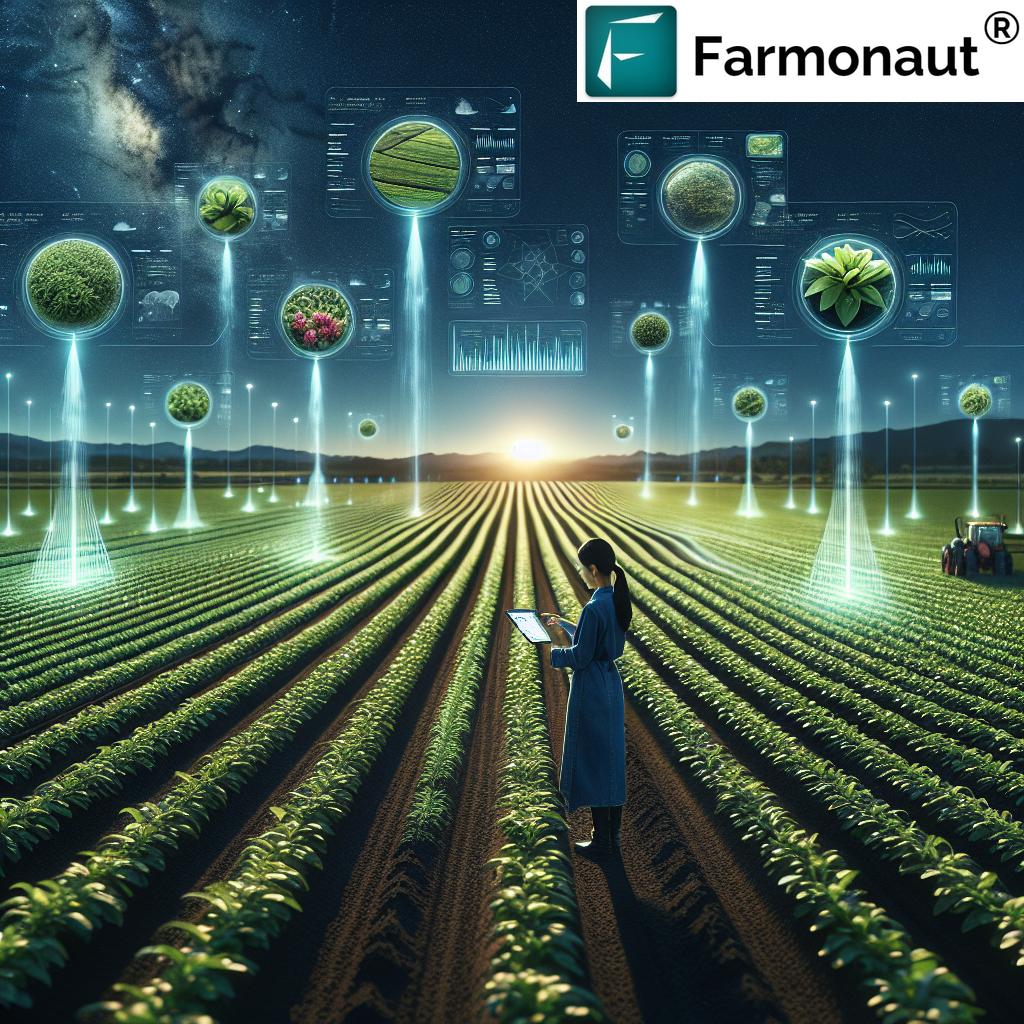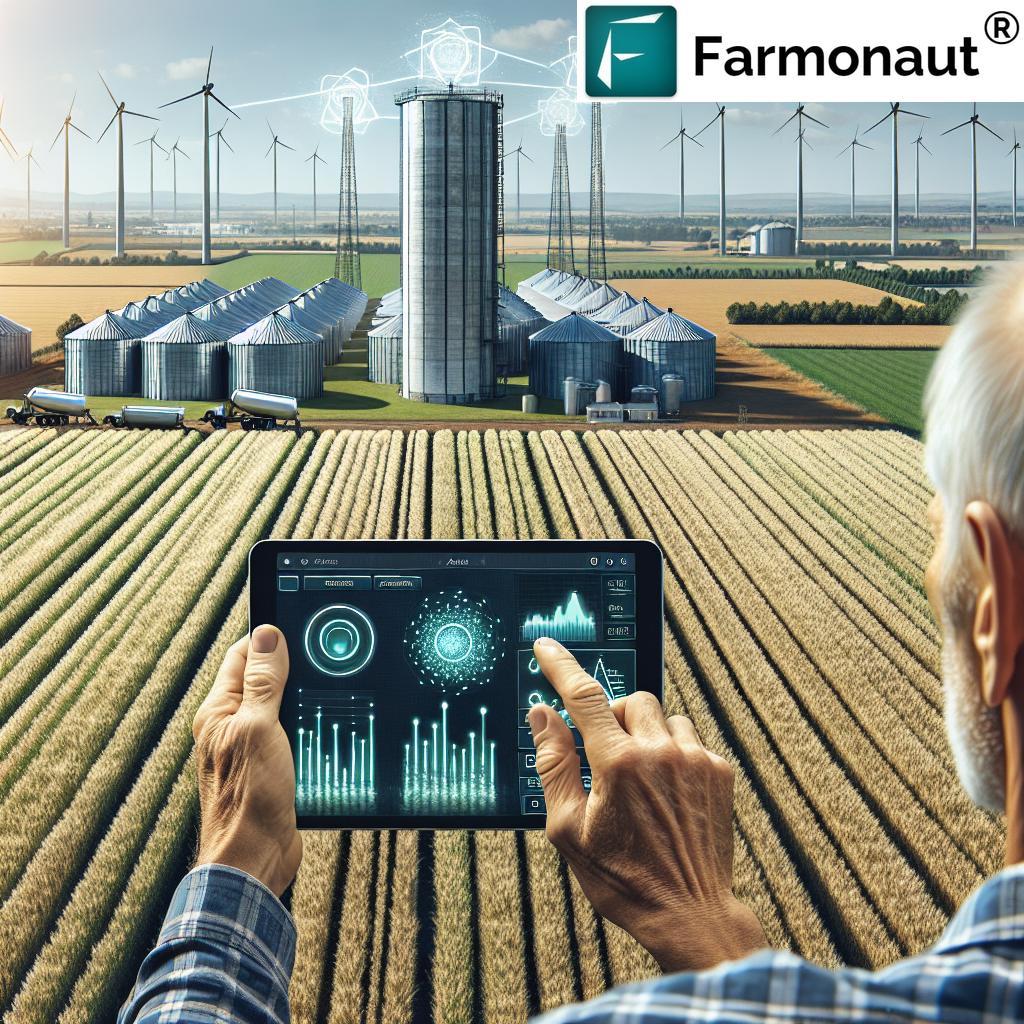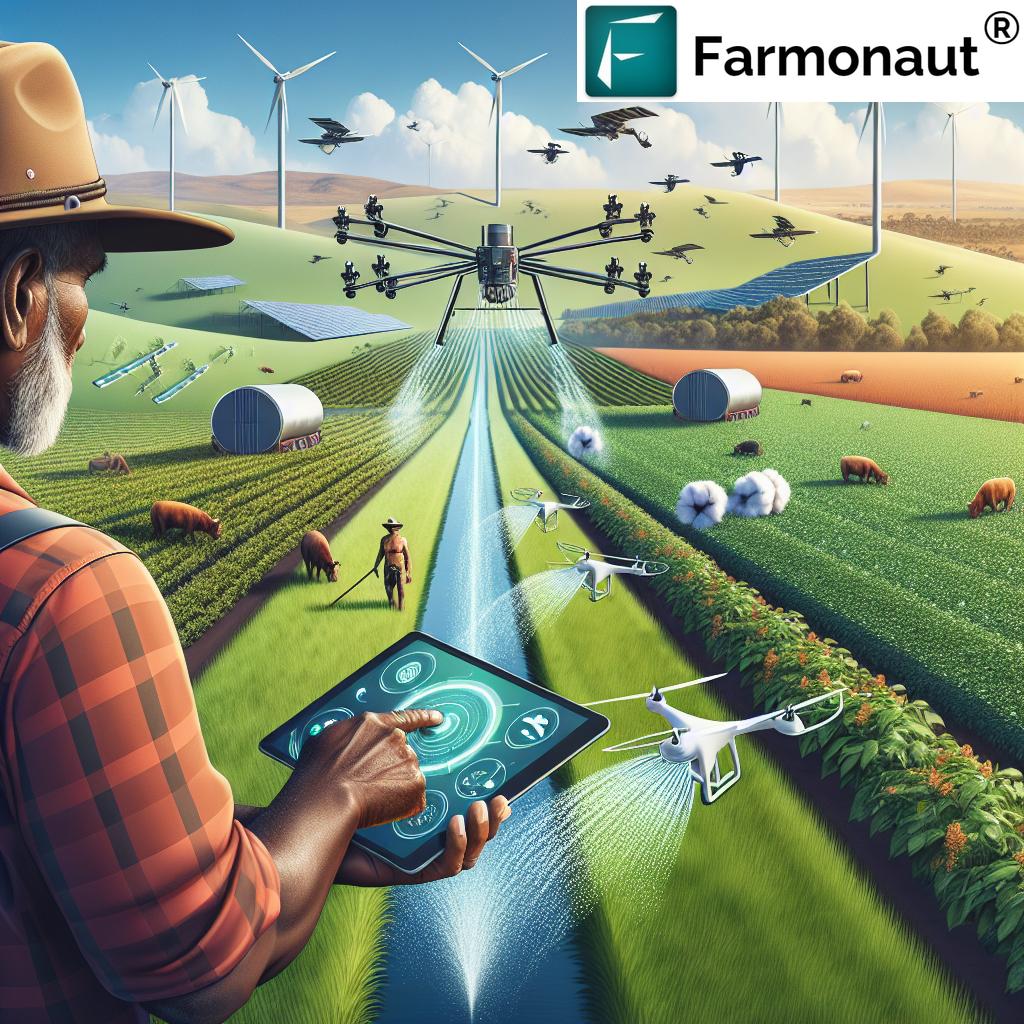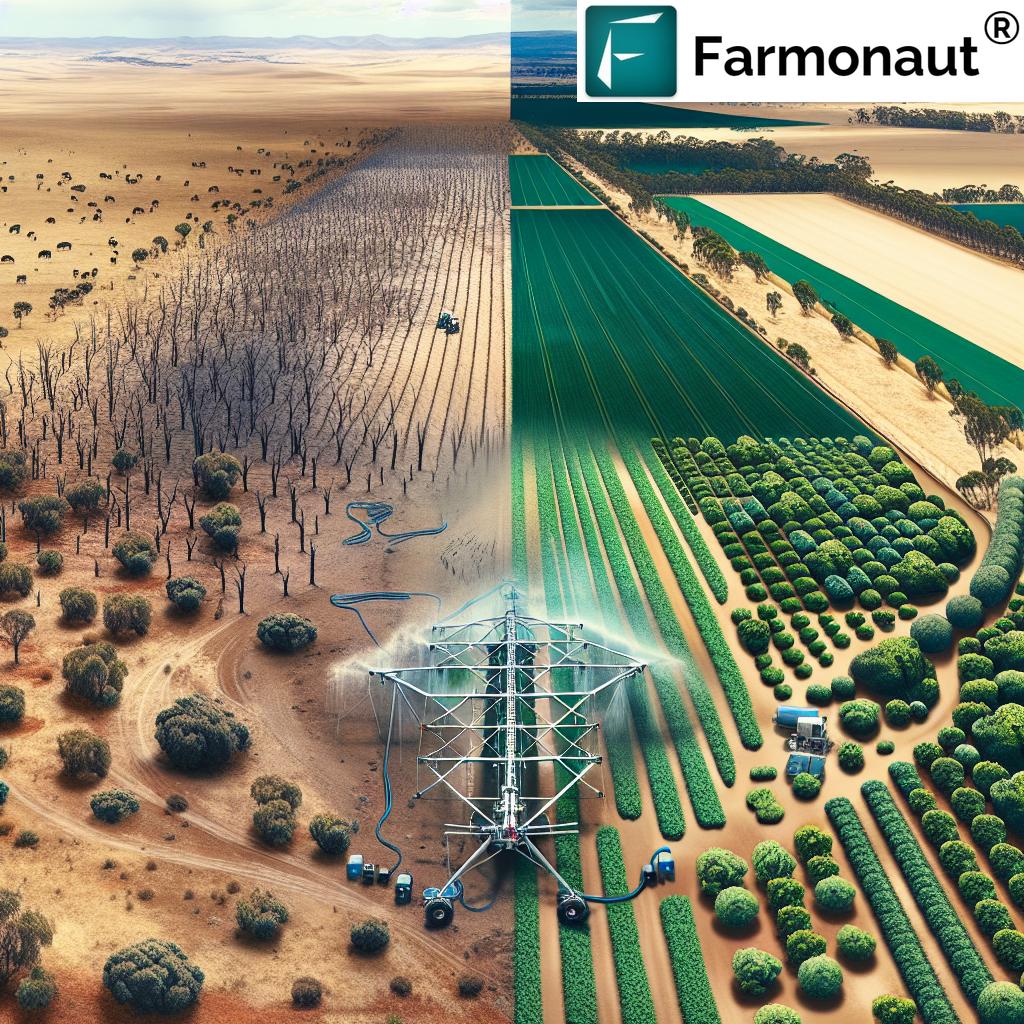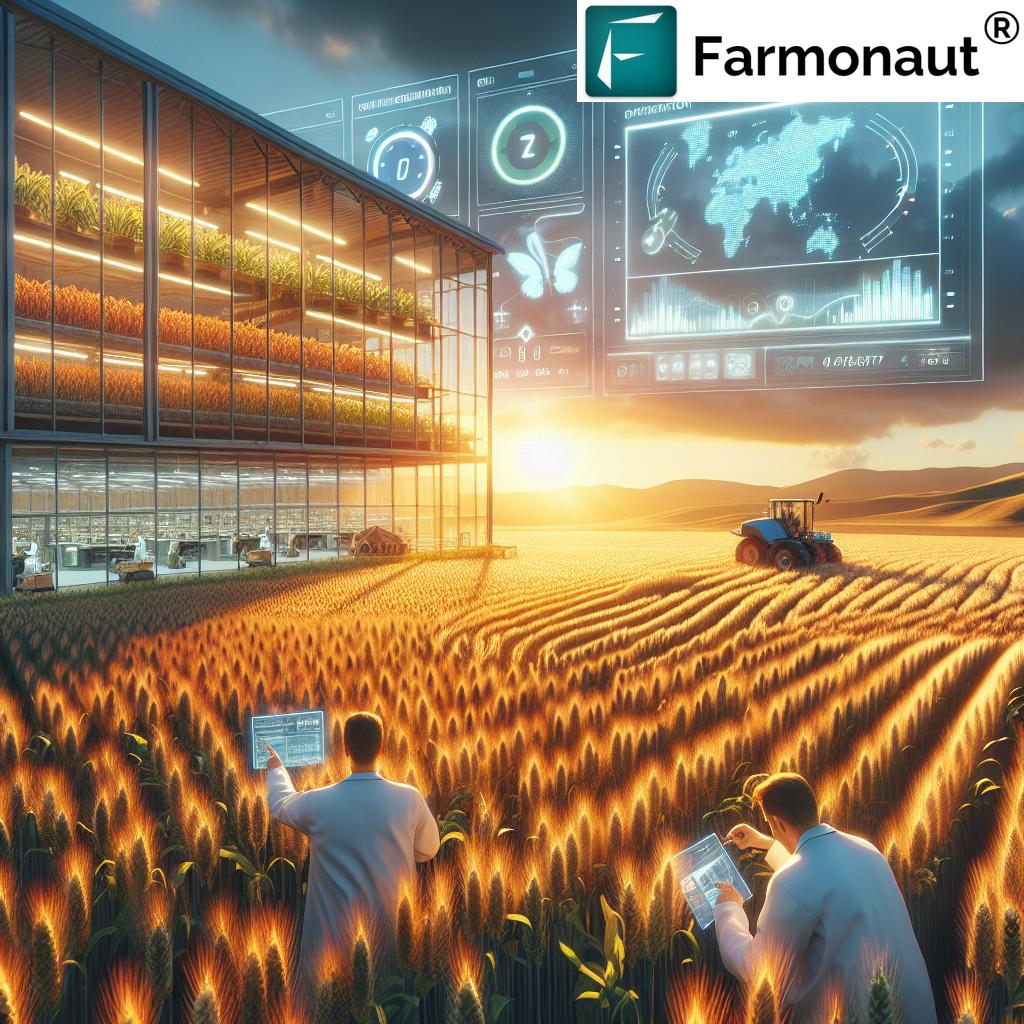Revolutionizing Australian Agriculture: Farmonaut’s Digital Transformation for Sustainable Farming and Crop Yield Optimization
Welcome to our comprehensive exploration of the digital revolution reshaping Australian agriculture. In this blog post, we’ll delve into the cutting-edge agricultural technology innovations and sustainable farming practices that are transforming the industry. As representatives of Farmonaut, we’re excited to share insights on how precision agriculture techniques and smart farming solutions are optimizing crop yields, enhancing livestock management, and driving the future of farming.
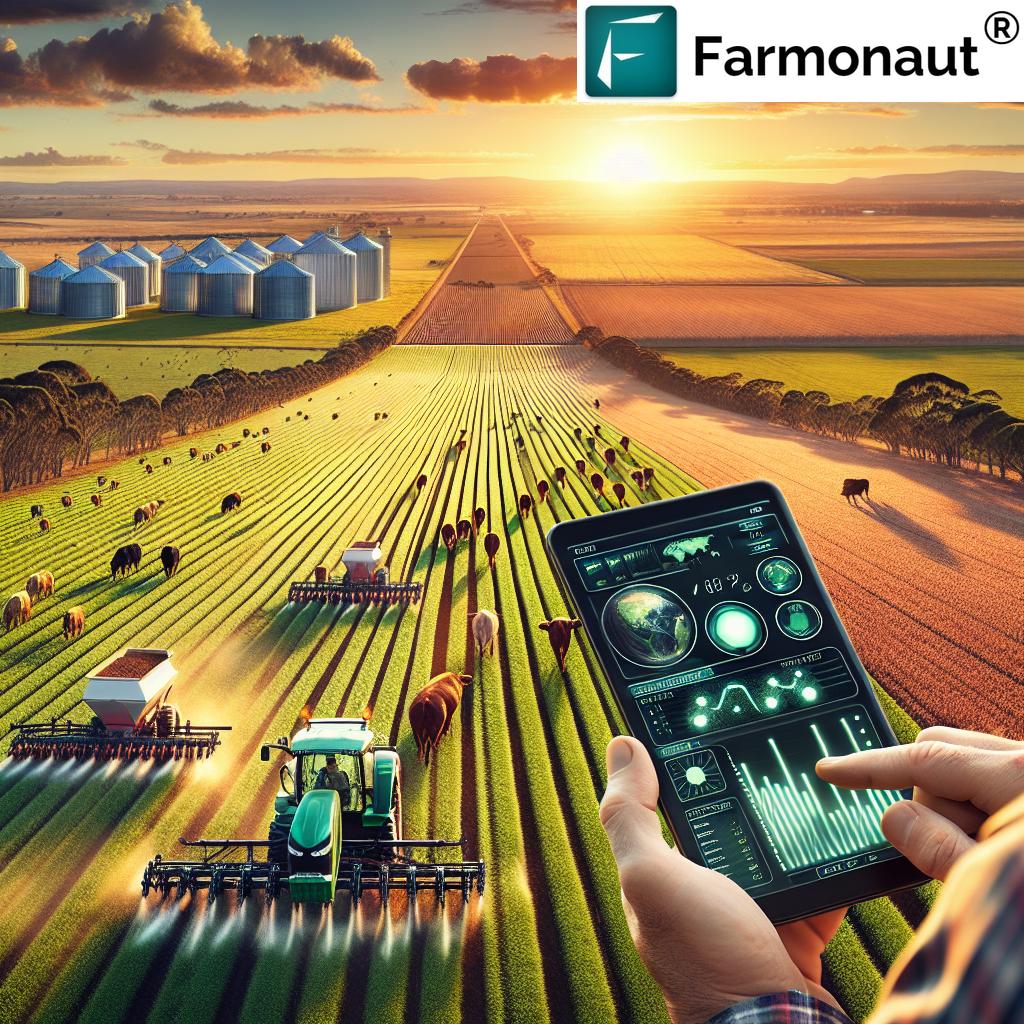
“Precision agriculture techniques can increase crop yields by up to 30% while reducing water usage by 50%.”
The Digital Transformation of Australian Agriculture
Australia’s agricultural sector is undergoing a profound transformation, driven by the adoption of digital technologies and data-driven approaches. This shift is not just about introducing new gadgets to the farm; it’s a complete overhaul of how we approach farming, from planning and planting to harvesting and distribution.
At Farmonaut, we’re at the forefront of this revolution, offering advanced satellite-based farm management solutions that make precision agriculture accessible and affordable for farmers across Australia and beyond. Our platform integrates innovative technology with traditional farming practices, providing real-time insights that empower farmers to make informed decisions.
Key Components of Digital Transformation in Agriculture
- Satellite-Based Crop Monitoring: Using multispectral satellite imagery to assess crop health and soil conditions.
- AI-Powered Advisory Systems: Providing personalized recommendations based on real-time data analysis.
- Blockchain for Traceability: Ensuring transparency and security in agricultural supply chains.
- IoT Devices: Collecting on-ground data for precise farm management.
- Big Data Analytics: Processing vast amounts of agricultural data to derive actionable insights.
These technologies are not just improving efficiency; they’re fundamentally changing how we approach farming in Australia. By leveraging these tools, we’re seeing significant improvements in crop yields, resource management, and overall farm productivity.
Precision Agriculture: The Future of Farming
Precision agriculture is at the heart of the digital transformation in Australian farming. This approach uses data from various sources to make highly accurate and timely decisions about crop management. At Farmonaut, we’re leveraging satellite technology and AI to bring precision agriculture to farms of all sizes.
Benefits of Precision Agriculture
- Optimized Resource Use: Precise application of water, fertilizers, and pesticides.
- Improved Crop Yields: Tailored crop management leads to higher productivity.
- Reduced Environmental Impact: Minimizing waste and over-application of chemicals.
- Cost Savings: Efficient use of resources translates to lower operational costs.
- Data-Driven Decision Making: Farmers can make informed choices based on real-time information.
Our satellite-based crop health monitoring system provides farmers with critical information on vegetation health (NDVI), soil moisture levels, and other key metrics. This data empowers farmers to make precise decisions about irrigation, fertilizer application, and pest management, ultimately leading to optimized crop yields and reduced resource wastage.
Sustainable Farming Practices in the Digital Age
Sustainability is no longer just a buzzword in agriculture; it’s a necessity. Digital transformation is playing a crucial role in making farming more sustainable across Australia. At Farmonaut, we’re committed to promoting sustainable farming practices through our technology solutions.
Key Sustainable Farming Practices Enhanced by Digital Technology
- Precision Irrigation: Using satellite data to optimize water usage.
- Smart Fertilizer Application: Applying fertilizers based on precise soil and crop needs.
- Integrated Pest Management: Using AI to predict and manage pest outbreaks more effectively.
- Crop Rotation Planning: Data-driven decisions for optimal crop rotation strategies.
- Soil Health Monitoring: Continuous assessment of soil conditions for long-term sustainability.
Our platform’s carbon footprinting feature allows agribusinesses to track their environmental impact in real-time. This not only helps in reducing emissions but also assists in compliance with environmental regulations, contributing to more sustainable farming practices across Australia.
Crop Yield Optimization: Harnessing the Power of Data
Optimizing crop yields is a primary goal for farmers, and digital technologies are providing unprecedented tools to achieve this. At Farmonaut, we’re leveraging advanced analytics and AI to help farmers maximize their crop yields while minimizing resource use.
Strategies for Crop Yield Optimization
- Predictive Analytics: Using historical and real-time data to forecast crop performance.
- Variable Rate Technology: Adjusting inputs based on field variability.
- Crop Health Monitoring: Early detection of issues through satellite imagery analysis.
- Weather Integration: Incorporating accurate weather forecasts into farming decisions.
- Soil Analysis: Detailed soil mapping for optimized planting and fertilization strategies.
Our Jeevn AI Advisory System analyzes satellite data and other inputs to generate customized advice for farmers, helping them make informed decisions that lead to improved crop yields and overall farm productivity.

Smart Farming Solutions: Beyond Traditional Agriculture
Smart farming solutions are revolutionizing agricultural practices in Australia, offering new ways to manage farms more efficiently and sustainably. These solutions integrate various technologies to create a connected and intelligent farming ecosystem.
Key Components of Smart Farming
- IoT Sensors: Collecting real-time data on soil conditions, weather, and crop health.
- Automated Machinery: Precision planting and harvesting with minimal human intervention.
- Drone Technology: Aerial imaging and crop spraying for precise field management.
- AI and Machine Learning: Processing complex data sets to derive actionable insights.
- Mobile Applications: Providing farmers with on-the-go access to farm management tools.
At Farmonaut, we’re integrating these smart farming solutions into our platform, offering farmers a comprehensive suite of tools to manage their farms more effectively. Our mobile and web applications allow farmers to access critical farm data and insights from anywhere, at any time.
Efficient Livestock Management in the Digital Era
While much of the focus on digital transformation in agriculture has been on crop production, livestock management is also benefiting significantly from these advancements. Digital tools are revolutionizing how farmers monitor, manage, and care for their livestock.
Digital Solutions for Livestock Management
- GPS Tracking: Monitoring animal movement and grazing patterns.
- Health Monitoring Wearables: Real-time health data collection for early disease detection.
- Automated Feeding Systems: Precision feeding based on individual animal needs.
- Breeding Management Software: Optimizing breeding programs through data analysis.
- Environmental Control Systems: Maintaining optimal conditions in livestock housing.
While Farmonaut’s primary focus is on crop management, our platform’s versatility allows for integration with livestock management systems, providing a holistic approach to farm management for mixed farming operations.
“Modern grain storage solutions can reduce post-harvest losses by up to 40%, significantly improving food security.”
Agribusiness Management Software: Streamlining Farm Operations
In today’s complex agricultural landscape, effective agribusiness management is crucial. Advanced software solutions are helping Australian farmers and agribusinesses streamline their operations, from financial management to supply chain logistics.
Features of Modern Agribusiness Management Software
- Financial Planning and Budgeting: Tools for managing farm finances and cash flow.
- Inventory Management: Tracking inputs, outputs, and storage levels.
- Compliance and Reporting: Simplifying regulatory compliance and generating reports.
- Supply Chain Management: Improving traceability and logistics efficiency.
- Human Resource Management: Managing farm labor and contractors effectively.
Farmonaut’s platform integrates with various agribusiness management tools, allowing farmers to consolidate their farm data and management processes in one place. Our blockchain-based traceability solutions are particularly valuable for agribusinesses looking to enhance transparency in their supply chains.
Agricultural Research and Development: Driving Innovation
The future of Australian agriculture depends on continuous innovation and research. Digital technologies are not only transforming farm practices but also revolutionizing how agricultural research is conducted.
Areas of Focus in Agricultural R&D
- Crop Genetics: Developing resilient and high-yielding crop varieties.
- Precision Agriculture Technologies: Advancing sensors, AI, and robotics for farming.
- Sustainable Farming Practices: Researching methods to reduce environmental impact.
- Climate Change Adaptation: Developing strategies to cope with changing climate patterns.
- Biostimulants and Crop Protection: Innovating natural solutions for plant health and pest control.
At Farmonaut, we’re committed to supporting agricultural research by providing researchers with access to our satellite data and analytics tools. This collaboration between technology providers and researchers is crucial for advancing the field of agriculture.
Modern Grain Storage Solutions: Reducing Post-Harvest Losses
Efficient grain storage is a critical component of modern agriculture, playing a vital role in food security and farm profitability. Digital technologies are transforming traditional storage methods, offering smart solutions that minimize losses and maintain grain quality.
Innovations in Grain Storage
- Smart Silos: Equipped with sensors to monitor temperature, humidity, and CO2 levels.
- Automated Aeration Systems: Maintaining optimal storage conditions automatically.
- Inventory Management Software: Real-time tracking of grain quantity and quality.
- Pest Detection Systems: Early warning for potential infestations.
- Blockchain for Traceability: Ensuring transparency in grain storage and distribution.
While Farmonaut doesn’t directly provide grain storage solutions, our satellite-based monitoring can assist in planning harvest timing and storage needs, contributing to more effective grain management strategies.
Weather Analysis and Climate Adaptation in Agriculture
In the face of climate change, accurate weather analysis and climate adaptation strategies are becoming increasingly crucial for Australian farmers. Digital tools are providing unprecedented accuracy in weather forecasting and climate modeling.
Digital Tools for Weather and Climate Management
- High-Resolution Weather Forecasting: Localized, short-term weather predictions.
- Seasonal Climate Modeling: Long-term forecasts for crop planning.
- Drought Prediction Tools: Early warning systems for water scarcity.
- Frost Risk Assessment: Protecting crops from unexpected temperature drops.
- Climate-Smart Agriculture Practices: Adapting farming methods to changing climate patterns.
Farmonaut’s platform integrates weather data with crop health information, providing farmers with a comprehensive view of how weather patterns are affecting their crops. This integration allows for more informed decision-making in the face of changing climate conditions.
Soil Health and Pasture Management: The Foundation of Sustainable Farming
Healthy soils and well-managed pastures are the bedrock of sustainable agriculture. Digital technologies are providing new ways to monitor and manage soil health and pasture conditions, leading to more productive and sustainable farming practices.
Digital Approaches to Soil and Pasture Management
- Soil Mapping Technologies: Creating detailed maps of soil composition and health.
- Remote Sensing for Pasture Assessment: Monitoring pasture growth and quality from satellite imagery.
- Soil Moisture Sensors: Real-time monitoring of soil water content.
- Nutrient Management Software: Optimizing fertilizer application based on soil needs.
- Erosion Prediction Models: Identifying and mitigating soil erosion risks.
Farmonaut’s satellite-based monitoring provides valuable insights into soil moisture levels and vegetation health, helping farmers make informed decisions about soil management and pasture rotation.
Nitrogen Efficiency and Biostimulants: Boosting Crop Yields Sustainably
Optimizing nitrogen use and incorporating biostimulants are key strategies for increasing crop yields while minimizing environmental impact. Digital technologies are playing a crucial role in fine-tuning these approaches for maximum efficiency.
Innovations in Nitrogen Management and Biostimulants
- Precision Nitrogen Application: Using sensors and AI to apply nitrogen exactly where and when it’s needed.
- Biostimulant Efficacy Tracking: Monitoring the impact of biostimulants on crop health and yield.
- Nitrogen Cycle Modeling: Understanding and optimizing nitrogen dynamics in the soil.
- Plant-Based Sensors: Detecting nitrogen levels in plants for real-time management.
- Integrated Nutrient Management Systems: Combining traditional and biological approaches for optimal plant nutrition.
While Farmonaut doesn’t produce biostimulants, our platform can help farmers track the effectiveness of these products by monitoring crop health and growth patterns over time.
Farm Safety and Equipment Innovation
Farm safety is a critical concern in agriculture, and digital technologies are introducing new ways to enhance safety measures and improve equipment efficiency. From automated machinery to safety monitoring systems, these innovations are making farming safer and more productive.
Technological Advancements in Farm Safety and Equipment
- Autonomous Tractors and Harvesters: Reducing operator fatigue and increasing precision.
- Wearable Safety Devices: Monitoring worker health and environmental conditions.
- Smart PPE (Personal Protective Equipment): Enhanced protection with integrated sensors.
- Equipment Maintenance Tracking: Predictive maintenance to prevent breakdowns and accidents.
- Virtual Reality Training: Safe, immersive training for complex farm operations.
Farmonaut’s fleet and resource management tools contribute to farm safety by helping agribusinesses optimize vehicle usage and ensure proper maintenance schedules are followed.
The Future of Australian Agriculture: Embracing Digital Transformation
As we look to the future, it’s clear that digital transformation will continue to play a pivotal role in shaping Australian agriculture. The integration of advanced technologies, data-driven decision-making, and sustainable practices will be key to meeting the challenges of feeding a growing population while preserving our natural resources.
Key Trends Shaping the Future of Agriculture
- Artificial Intelligence and Machine Learning: Enhancing predictive capabilities and automation in farming.
- Vertical Farming and Urban Agriculture: Bringing food production closer to urban centers.
- Gene Editing and Synthetic Biology: Developing more resilient and productive crop varieties.
- Blockchain in Agriculture: Improving traceability and transparency across the supply chain.
- Robotics and Drones: Automating labor-intensive tasks and improving precision in farming operations.
At Farmonaut, we’re committed to staying at the forefront of these technological advancements, continuously evolving our platform to meet the changing needs of Australian farmers and agribusinesses.
Conclusion: A New Era for Australian Agriculture
The digital transformation of Australian agriculture represents a significant leap forward in our ability to produce food sustainably, efficiently, and profitably. From precision agriculture techniques to smart farming solutions, the innovations we’ve explored in this blog post are reshaping the agricultural landscape.
As we embrace these new technologies, it’s important to remember that the goal is not just to increase productivity, but to do so in a way that sustains our environment and supports our rural communities. The future of Australian agriculture is bright, and with tools like Farmonaut’s satellite-based farm management platform, farmers are well-equipped to face the challenges and opportunities that lie ahead.
We invite you to join us on this journey of agricultural innovation. Whether you’re a small-scale farmer or a large agribusiness, Farmonaut’s solutions can help you harness the power of digital technology to optimize your operations and contribute to a more sustainable agricultural future.
FAQ Section
- Q: What is precision agriculture?
A: Precision agriculture is a farming management concept that uses digital technologies to monitor and optimize crop production processes. It involves the use of GPS, satellite imagery, IoT sensors, and data analytics to make more accurate and efficient farming decisions. - Q: How does satellite imagery help in agriculture?
A: Satellite imagery provides valuable data on crop health, soil moisture, and field conditions. This information helps farmers make informed decisions about irrigation, fertilization, and pest management, leading to optimized crop yields and resource use. - Q: What are biostimulants and how do they benefit agriculture?
A: Biostimulants are substances or microorganisms applied to plants to enhance nutrition efficiency, abiotic stress tolerance, and crop quality traits. They can help improve crop yields and resilience without the environmental drawbacks of some chemical fertilizers. - Q: How is blockchain technology used in agriculture?
A: Blockchain in agriculture is primarily used for improving traceability in the supply chain. It creates a transparent and tamper-proof record of a product’s journey from farm to consumer, enhancing food safety and building consumer trust. - Q: What is the role of AI in modern farming?
A: AI in farming helps in analyzing complex data sets from various sources like weather stations, satellites, and soil sensors. It can predict crop yields, detect plant diseases early, optimize resource use, and automate various farming processes.
Farmonaut Subscriptions
Ready to revolutionize your farming practices? Explore Farmonaut’s solutions today:
For developers interested in integrating our satellite and weather data into their applications, check out our API and API Developer Docs.
| Agricultural Aspect | Traditional Methods | Digital Solutions | Estimated Improvement |
|---|---|---|---|
| Crop Yield Optimization | Manual field inspections | Satellite imagery and AI-driven analytics | 20-30% increase in yield |
| Livestock Management | Visual monitoring and manual record-keeping | GPS tracking and health monitoring wearables | 15-25% improvement in herd health |
| Soil Health Monitoring | Periodic soil testing | Real-time sensors and satellite-based analysis | 30-40% better nutrient management |
| Weather Analysis | Regional weather forecasts | Hyperlocal AI-powered predictions | 50-60% more accurate forecasting |
| Resource Management | Fixed schedules for irrigation and fertilization | Precision application based on real-time data | 30-40% reduction in water and fertilizer use |
Join us in shaping the future of Australian agriculture with Farmonaut’s innovative solutions!


